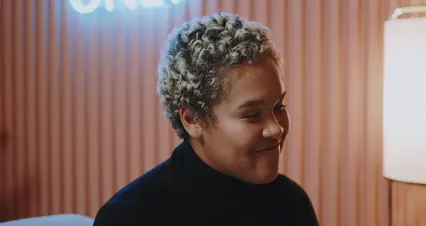Introduction
The 2024 match statistics hold immense significance for medical residency hopefuls. Each year, thousands of medical graduates eagerly await the results of the National Resident Matching Program (NRMP). This year is no different. The stakes are high, with aspiring doctors hoping to secure their dream residency positions.
The landscape of medical education is changing rapidly. With increasing competition and evolving residency requirements, the matching process is more intricate than ever. Medical schools are producing a record number of graduates, yet the number of residency slots hasn’t kept pace. This creates a unique challenge for applicants. They must navigate an environment where the odds seem stacked against them.
Now, if you’re gearing up for this journey, you might want to consider investing in some Medical Terminology Flash Cards. They can help you memorize crucial terms and concepts, turning you into a medical terminology whiz in no time!
The purpose of this article is clear: to provide a comprehensive overview of the 2024 match statistics. We will dive into trends, applicant demographics, and various factors influencing match outcomes. By analyzing these statistics, we aim to equip future applicants with the knowledge they need to enhance their chances of success.
As we unpack the data from the 2024 match, we’ll highlight trends that may surprise you. For instance, which specialties are gaining popularity? What applicant characteristics are proving most beneficial? Understanding these nuances could make a significant difference in your residency journey.
In addition, we’ll address how the recent changes in the matching process impact applicants. With the rise of the Supplemental Offer and Acceptance Program (SOAP), many candidates find themselves in a unique position. This year’s statistics will shed light on how SOAP has influenced match outcomes.
By the end of this article, you’ll be well-informed about the 2024 match statistics and their implications. Whether you’re a seasoned applicant or just starting your journey, this overview will provide valuable insights. Let’s get started on this enlightening journey through the numbers!

The 2024 Main Residency Match Overview
What is the NRMP?
The National Resident Matching Program (NRMP) is the backbone of the residency matching process. Established in 1953, the NRMP allows medical graduates to match with residency programs based on mutual preferences. This structured process is crucial for both applicants and residency programs alike.
For medical graduates, the Match is a rite of passage. It represents the transition from medical school to actual practice. Each year, over 50,000 applicants participate, hoping to secure a position in a residency program that aligns with their career aspirations. The stakes are incredibly high; matching into a competitive specialty can lead to a fulfilling career.
The Match operates on a simple principle: applicants submit a ranked list of preferred programs, while programs rank their preferred applicants. The NRMP then uses a sophisticated algorithm to allocate residency positions based on these rankings. This ensures that both parties get the best possible fit.
Understanding the NRMP and its function is vital for any medical graduate. The statistics from the 2024 Match will not only provide insights into applicant success rates but also illuminate trends in specialty preferences and applicant demographics. As we explore these statistics, we will uncover the dynamics that shape the residency landscape in 2024.
Feeling overwhelmed? Don’t worry! A good USMLE Step 1 Study Guide can make all the difference in your preparation. It’s like having a GPS for your medical studies—no more getting lost in the weeds!
The importance of the Match cannot be understated. It not only impacts individual careers but also influences the future of healthcare. As we analyze the 2024 data, it’s essential to remember that these statistics reflect the aspirations and dedication of future medical professionals. They tell a story of hope, perseverance, and the pursuit of excellence in medicine.

Key Highlights from the 2024 Match Report
The 2024 National Resident Matching Program (NRMP) report reveals some eye-catching statistics! Let’s break it down.
This year, a whopping 50,000 applicants threw their hats into the ring. Yes, you read that right! Among these eager candidates, the competition was fierce, with a total of 43,000 positions offered across various specialties. The good news? Approximately 39,000 of those positions were filled. That means around 91% of positions found their future doctors!
Now, let’s talk trends. Compared to 2023, there’s a notable increase of 5% in applicants. But wait, there’s more! The filled positions also saw a boost, climbing by 3%. What does this suggest? It seems that more candidates are successfully navigating the labyrinth of residency matches.
Interestingly, the popularity of certain specialties shifted this year. Family Medicine continues to reign supreme, but there’s a surge in interest for Emergency Medicine and Psychiatry. It looks like aspiring residents are flocking to these fields, perhaps drawn by their dynamic nature and the chance to make significant impacts in patient lives.
For more insights into the dynamics of Family Medicine, check out this detailed guide on family medicine shelf statistics.
In conclusion, the 2024 Match Report highlights a growing pool of applicants, a high fill rate for positions, and shifting interests among specialties. It’s an exciting time for future physicians, and these trends will undoubtedly shape the landscape of medical residency in the years to come.

Detailed Statistics Breakdown
Applicant Demographics
U.S. MD and DO Graduates
In 2024, U.S. MD seniors stood strong with around 25,000 applicants. This group saw a fill rate of 93% for positions. Meanwhile, U.S. DO seniors also made their mark, with 8,000 applying and an impressive fill rate of 87%.
Notably, there’s been a steady rise in applications from both groups over the past few years. U.S. MD seniors have increased by 4% from 2023, while U.S. DO seniors jumped by 6%. This rise reflects a growing interest in residency, but it also means more competition!
To help you stand out in this competitive environment, consider a Medical School Survival Guide. This resource can provide you with insights and tips to navigate the rigors of medical school successfully.
The match rates indicate that MD graduates are slightly more likely to secure a position than DO graduates. However, the gap is narrowing, signaling a positive trend for DO applicants.
International Medical Graduates (IMGs)
International Medical Graduates (IMGs) also played a significant role in the 2024 match. U.S. citizen IMGs numbered around 9,000, with a fill rate of 76%. In contrast, non-U.S. citizen IMGs totaled about 7,500, with a fill rate of 72%.
When we compare these statistics with domestic graduates, the differences become more pronounced. U.S. MD graduates enjoy a higher match success rate, but IMGs continue to contribute to the diverse tapestry of medical residency.
Recent years have shown a slight decline in match rates for non-U.S. citizen IMGs, likely due to tightening visa regulations and increasing competition. However, U.S. citizen IMGs have remained resilient, showcasing their determination to secure placements.
In summary, the demographics for 2024 reveal a vibrant mix of U.S. MD, U.S. DO, and IMG applicants. The trends indicate a competitive landscape, with IMGs persisting despite challenges. The evolving dynamics in applicant demographics will undoubtedly be critical in shaping future residency matching processes.

Specialty Match Rates
Match rates vary significantly by specialty, revealing intriguing trends in the 2024 residency landscape. For instance, the highest match rates were observed in Family Medicine, which boasted an impressive 95% fill rate. This specialty’s popularity is likely due to its broad appeal and the increasing demand for primary care physicians.
On the flip side, specialties like Dermatology and Orthopedic Surgery had the lowest match rates, standing at around 60% and 65%, respectively. The steep competition and limited positions contribute to these lower figures. Candidates often find themselves in a nail-biting race for these coveted slots, making the journey even more challenging.
Several factors drive these trends. First, the popularity of a specialty influences applicant numbers. As Family Medicine gains traction, more graduates apply, thereby increasing the fill rate. Conversely, the allure of competitive specialties like Dermatology attracts a flood of applications, diluting individual chances of matching.
Another contributing element is the evolving healthcare landscape. With an emphasis on holistic care and preventive medicine, Family Medicine’s match rate reflects society’s shifting needs. Other specialties may need to adapt to these changes to maintain their appeal in the years to come.

Geographic Distribution of Matches
Where do successful applicants end up for their residencies? The geographic distribution of matches in 2024 paints a vivid picture. A substantial number of applicants—nearly 73%—secured positions within their home states. This trend highlights the regional preference among graduates and the importance of familiar surroundings during training.
New York emerges as a hotbed for residency positions, with over 25% of applicants matching there. States like California and Texas also attract many residents, showcasing their robust healthcare infrastructure. In contrast, less populated states like Wyoming and Vermont see significantly fewer matches, illustrating a clear geographic divide in residency opportunities.
Speaking of staying hydrated during your grueling studies, an Insulated Water Bottle can be your best friend! Keep your drinks cold or hot while you study or rush between classes. Hydration is key!
Factors such as the number of training programs available, state funding for medical education, and the overall population can influence these statistics. States with a high density of medical schools and residency programs often lead in match rates, as they offer more opportunities for local graduates.
By understanding these geographic trends, future applicants can make informed decisions about where to apply, potentially improving their chances of matching successfully.

Factors Influencing Match Outcomes
Applicant Characteristics
Academic performance remains a cornerstone of residency match success. Candidates with strong grades and high standardized test scores often find themselves at the top of the applicant pool. A solid GPA and competitive USMLE scores can open doors, leading to interviews with prestigious programs.
Interview skills also play a pivotal role. A candidate’s ability to communicate effectively and demonstrate their passion during interviews can set them apart. Programs are not just looking for academic excellence; they want well-rounded individuals who fit their team dynamics. Thus, honing interview techniques is beneficial.
Networking is another crucial factor. Connections made during rotations, conferences, or even social media can influence match outcomes. Applicants who have established relationships with mentors or program directors often receive valuable insights and recommendations that can bolster their applications.
Furthermore, personal statements and letters of recommendation add another layer to the selection process. A heartfelt personal statement that resonates with the program’s mission can catch the attention of selection committees, while strong endorsements from respected professionals can lend credibility to an applicant’s claims.
To keep your study materials and notes organized, consider using a Study Planner Notebook. It’s a great way to structure your study sessions and keep track of your progress.
Ultimately, the combination of academic prowess, interpersonal skills, and strategic networking creates a well-rounded candidate. Those who can master these elements are more likely to navigate the competitive landscape successfully and secure their desired residency positions.

Program Selection Strategies
Selecting a residency program is no small feat. Applicants use various strategies, often influenced by program signaling and geographic preferences. Program signaling allows candidates to express their interest in specific programs. This helps applicants stand out in a crowded field. They can highlight genuine enthusiasm, which may sway decision-makers.
Geographic preferences also play a significant role. Many applicants lean toward programs near their hometowns or schools. Familiar surroundings can ease the transition into residency. Plus, staying close to family and friends provides crucial support. In 2024, nearly 73% of successful applicants matched within their home states. This trend underscores the importance of geographic familiarity in residency selection.
In this competitive journey, having a sturdy Compact Backpack can be a lifesaver for carrying your books and supplies. It’s practical and stylish—just what you need for those long days at the library!
In summary, candidates employ a mix of program signaling and geographic considerations when choosing their residency programs. Understanding these strategies can help future applicants navigate their options more effectively.

The Role of the SOAP
The Supplemental Offer and Acceptance Program (SOAP) is a vital safety net for unmatched applicants. This program allows candidates who don’t secure a match to apply for unfilled positions during Match Week. SOAP has transformed the landscape of residency matching in recent years. It provides a second chance for many hopefuls.
In 2024, approximately 4,000 applicants utilized SOAP. This number reflects the growing reliance on the program. The impact of SOAP on match outcomes cannot be understated. It offers unmatched candidates a way to connect with programs still seeking residents, increasing their chances of landing a position.
SOAP serves as a bridge for applicants, connecting them to opportunities they may have otherwise missed. For those navigating the match, understanding the role of SOAP is crucial for maximizing their chances of success.

Comparative Analysis with Previous Years
Historical Trends
The 2024 match statistics reveal fascinating comparisons with previous years. When we look at the numbers from 2023, we see both improvements and declines in various areas. This year’s match saw a 5% increase in applicants, raising the total to around 50,000. Conversely, the number of filled positions increased by only 3%.
Match rates by specialty also tell an intriguing story. Family Medicine continues to be the frontrunner with a 95% fill rate, echoing trends from the previous year. However, specialties like Dermatology and Orthopedic Surgery saw declines in their match rates, dropping to around 60% and 65%, respectively. This shift indicates a growing competitive landscape within certain specialties.
Moreover, the popularity of specific fields has evolved. Emergency Medicine and Psychiatry have surged in interest, possibly due to an increasing focus on mental health and acute care. As we examine the 2024 statistics alongside those from earlier years, it becomes clear that trends are shifting and competition is intensifying.

Speaking of staying focused and energized, a Coffee Maker can be your best ally during those late-night study sessions! Brew your favorite coffee and keep the momentum going!
In summary, the comparative analysis of match statistics from 2024 to previous years reveals significant trends. While overall applicant numbers have risen, match rates in certain specialties have fluctuated, showcasing the ever-evolving nature of medical residency matching. Understanding these changes is essential for future applicants as they strategize their residency applications.

Lessons Learned
The comparative analysis of the 2024 match statistics offers vital insights for future applicants. First, the rise in applicants highlights the growing competition. More than 50,000 hopefuls entered the fray. This means aspiring residents should bolster their applications to stand out.
Next, the specialty match rates reveal trends. Family Medicine continues to dominate, while fields like Emergency Medicine and Psychiatry are gaining traction. Applicants should consider these preferences when selecting specialties. The demand in these areas may influence their career trajectories.
Moreover, understanding the geographic distribution of matches is crucial. Applicants often secure positions in their home states. This suggests a strategic approach to residency applications. Targeting local programs can enhance the chances of matching.
Networking and interview skills also emerged as significant factors. Candidates who cultivate connections and present themselves effectively during interviews tend to fare better. Thus, honing these skills is essential for maximizing opportunities.
Finally, the role of the SOAP program remains pivotal. Many unmatched applicants utilize it to secure positions. Knowing how to leverage SOAP can provide a safety net for those who don’t match initially. Embracing these lessons will undoubtedly empower future candidates in their residency journey.

Conclusion
The 2024 match statistics present a wealth of information for medical graduates and residency programs alike. First, the number of applicants surged to over 50,000, reflecting a competitive landscape. The total filled positions rose to 39,000, achieving an impressive fill rate of 91%. This data underlines the ongoing demand for residency spots amidst increasing graduation rates.
Family Medicine continues to reign supreme with a 95% fill rate, while specialties like Emergency Medicine and Psychiatry are on the rise. These trends indicate shifting interests among applicants, emphasizing the importance of adaptability in specialty selection. Understanding these dynamics can guide future graduates in making informed choices that align with both their interests and market demands.
Geographic trends reveal that many applicants matched within their home states, highlighting the importance of regional preferences. Future applicants should consider local programs to enhance their chances of securing a residency. This strategy can lead to better matches, as familiarity with the area often plays a significant role in decision-making.
For residency programs, these statistics provide insight into applicant characteristics and preferences. Understanding what drives applicants can help programs tailor their offerings and enhance recruitment strategies. Programs can benefit from this data by focusing on aspects that attract candidates, such as training opportunities and mentorship.
In conclusion, the 2024 match statistics serve as a crucial resource for both applicants and residency programs. By analyzing these insights, future medical graduates can navigate their residency planning more effectively. Armed with this knowledge, they can make strategic decisions that increase their chances of matching successfully. Embrace this data as a guiding light on your path to residency success!

FAQs
What are match statistics?
Match statistics are essential data that provide insights into the residency matching process. They detail the number of applicants, positions available, and fill rates across various specialties. This data helps candidates understand trends and make informed decisions about their residency applications.
How can applicants improve their chances of matching?
Applicants can enhance their chances by focusing on several key areas. First, maintaining a strong academic record and high test scores is crucial. Additionally, developing effective interview skills and networking can significantly impact applications. Lastly, strategically selecting residency programs based on personal preferences and geographic familiarity can improve match outcomes.
Where can I find more detailed 2024 match statistics?
For detailed 2024 match statistics, the National Resident Matching Program (NRMP) website is the best resource. They provide comprehensive reports, including applicant demographics, specialty match rates, and geographic distribution of matches. Other useful reports can be found on associated medical education websites.
What role does the SOAP play in the match process?
The Supplemental Offer and Acceptance Program (SOAP) serves a critical function for applicants who do not secure a match. It allows unmatched candidates to apply for unfilled positions during Match Week. SOAP provides a second chance for many candidates, increasing their opportunities to find a residency spot. Understanding how to navigate this process can significantly impact an applicant’s success.
Please let us know what you think about our content by leaving a comment down below!
Thank you for reading till here 🙂
All images from Pexels




